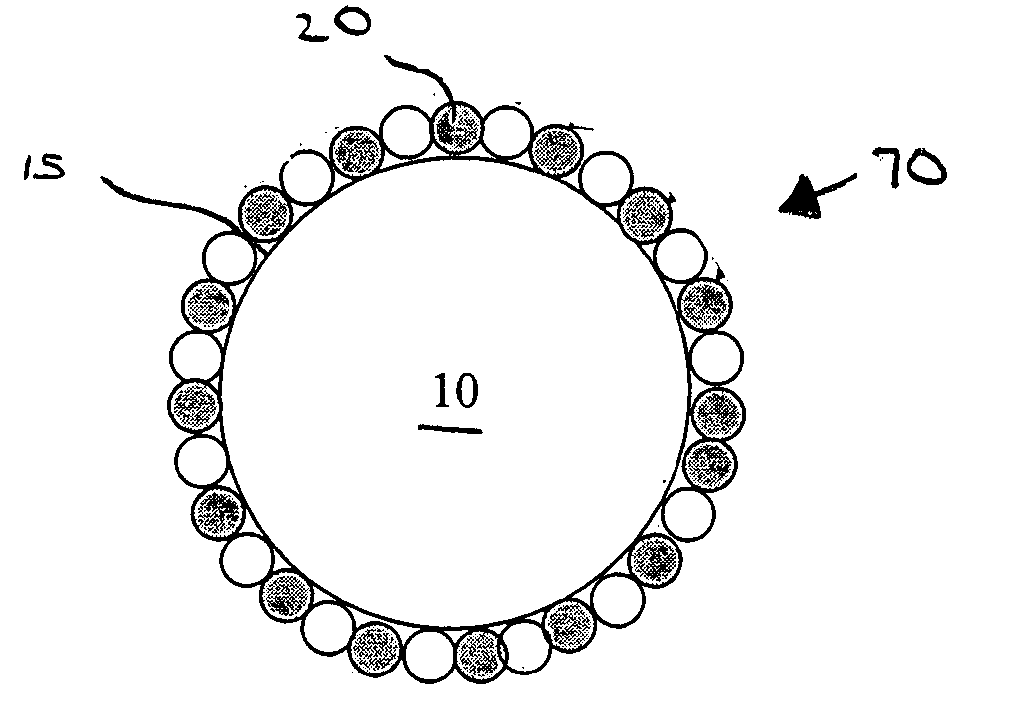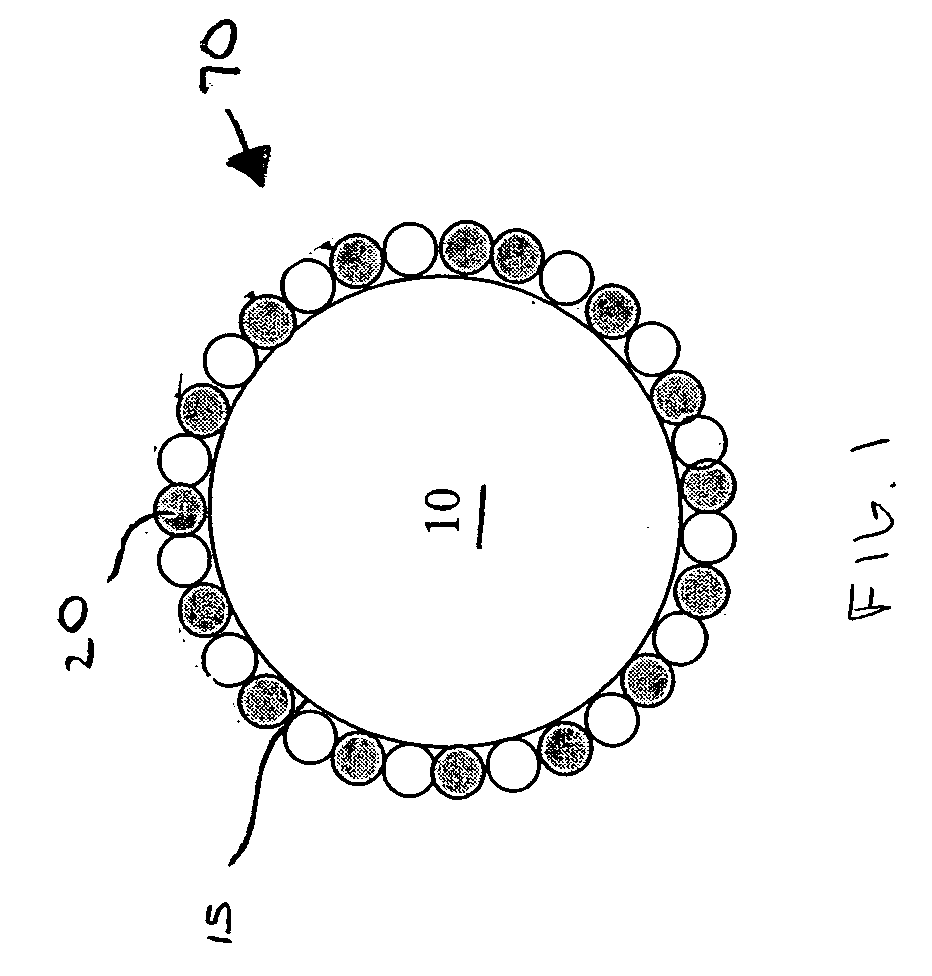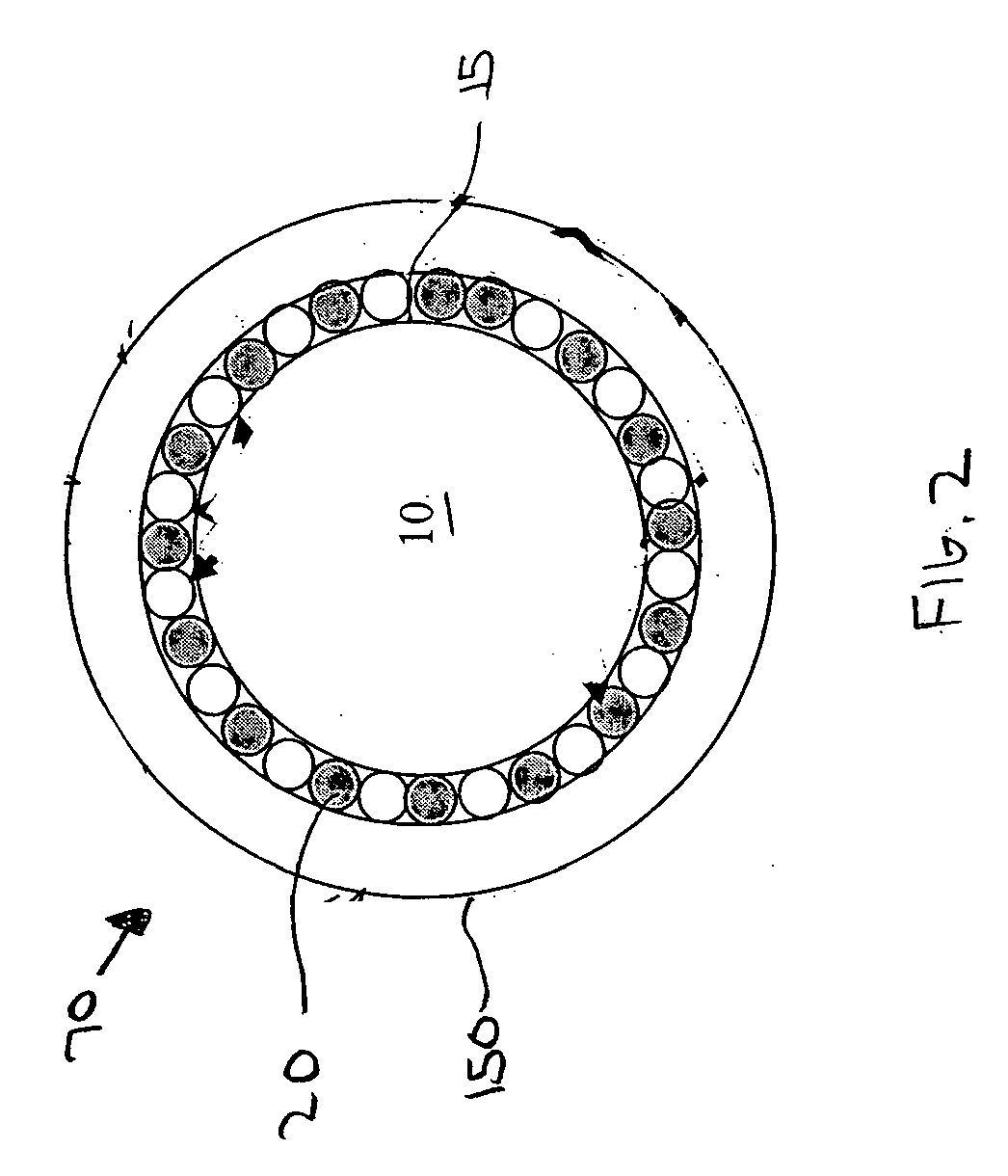III-V semiconductor nanocrystal complexes and methods of making same
a technology of semiconductor nanocrystals and complexes, which is applied in the field of semiconductor nanocrystal complexes, can solve the problems of limited growth of high-quality iii-v semiconductor nanocrystals, reduced quantum yield, colloidal shell synthesis methods, etc., and achieves high luminescent quantum yield
- Summary
- Abstract
- Description
- Claims
- Application Information
AI Technical Summary
Benefits of technology
Problems solved by technology
Method used
Image
Examples
example
Preparing a III-V Semiconductor Nanocrystal Complex
[0041] The present example discloses how to prepare a stable, high luminescent quantum yield semiconductor nanocrystal complex comprising an InGaP semiconductor nanocrystal core and a Zn metal layer formed on the outer surface of the semiconductor nanocrystal core after synthesis of the semiconductor nanocrystal core.
[0042] First, an indium precursor is prepared. In a reaction flask, 292 g / mol of 0.9 Molar indium (III) acetate (99.99% pure), is added to 367 g / mol of 0.1 Molar gallium acetylacetonoate (99% pure) and 256.4 g / mol of 3 Molar almitic acid (99% pure). The ingredients are mixed and heated to 130° C. for 2 hours under vacuum. The vacuum removes the acetic acid that could form. The resulting solution should be clear but may have a yellow tint.
[0043] Next, a phosphorous precursor and a zinc oleate precursor is prepared. The phosphorous precursor is formed by adding 0.3 mL TMSphosphine and 4.0 mL TOP under nitrogen. The zin...
PUM
| Property | Measurement | Unit |
|---|---|---|
| diameter | aaaaa | aaaaa |
| diameter | aaaaa | aaaaa |
| mean diameter | aaaaa | aaaaa |
Abstract
Description
Claims
Application Information
 Login to View More
Login to View More - R&D
- Intellectual Property
- Life Sciences
- Materials
- Tech Scout
- Unparalleled Data Quality
- Higher Quality Content
- 60% Fewer Hallucinations
Browse by: Latest US Patents, China's latest patents, Technical Efficacy Thesaurus, Application Domain, Technology Topic, Popular Technical Reports.
© 2025 PatSnap. All rights reserved.Legal|Privacy policy|Modern Slavery Act Transparency Statement|Sitemap|About US| Contact US: help@patsnap.com



